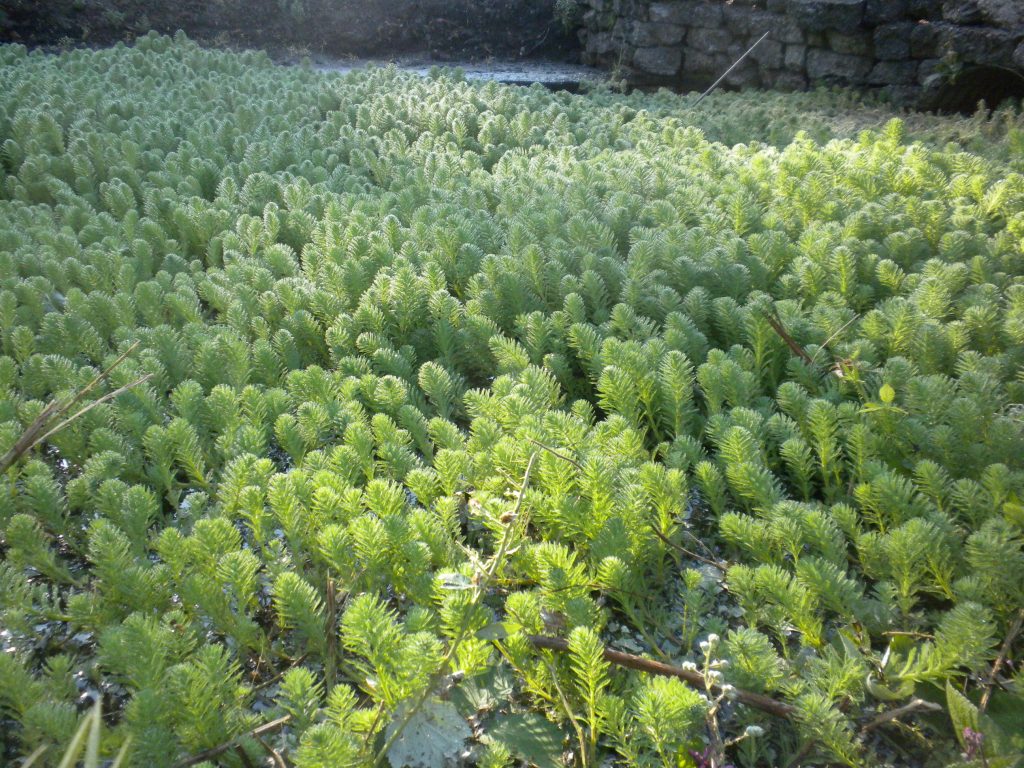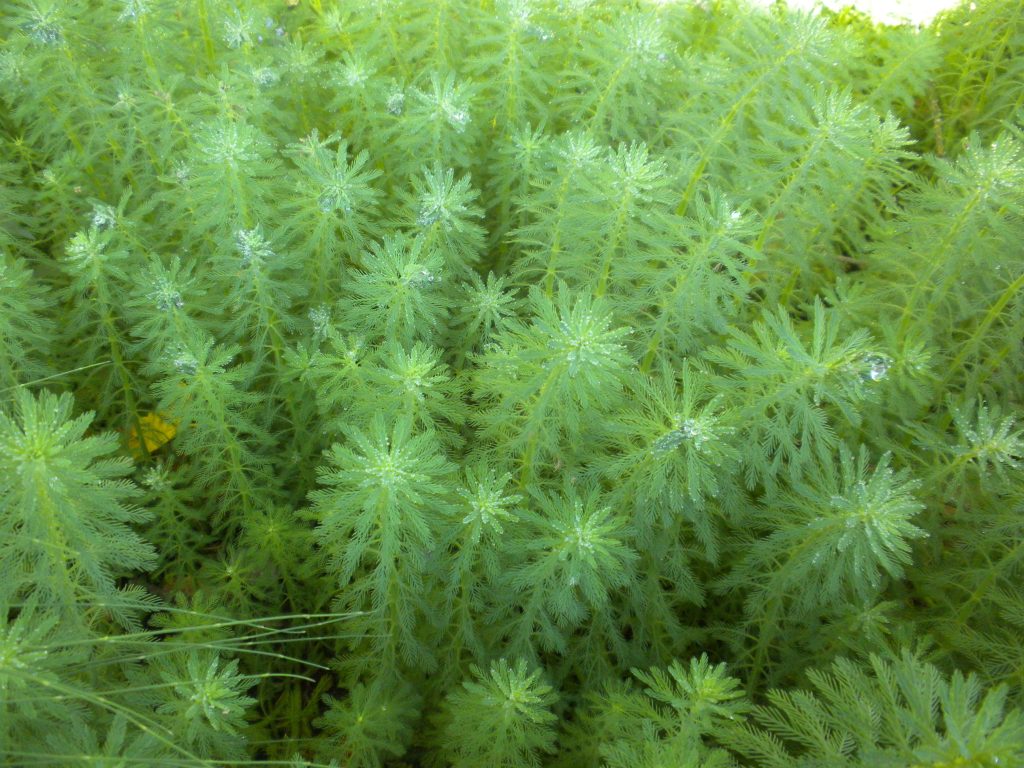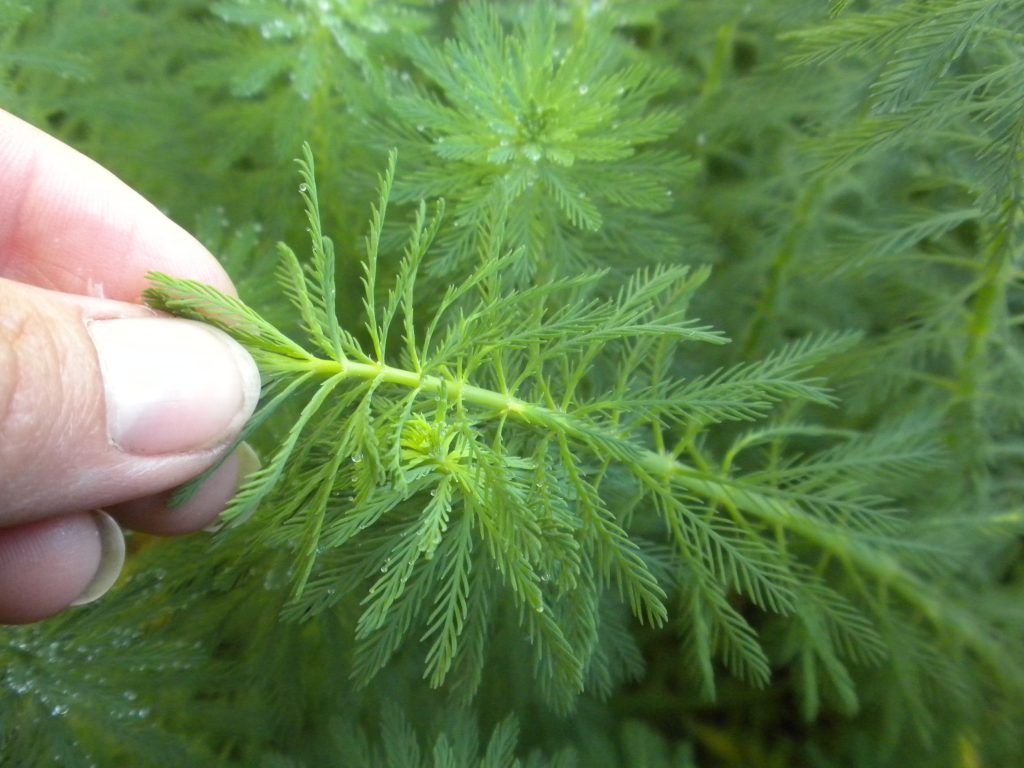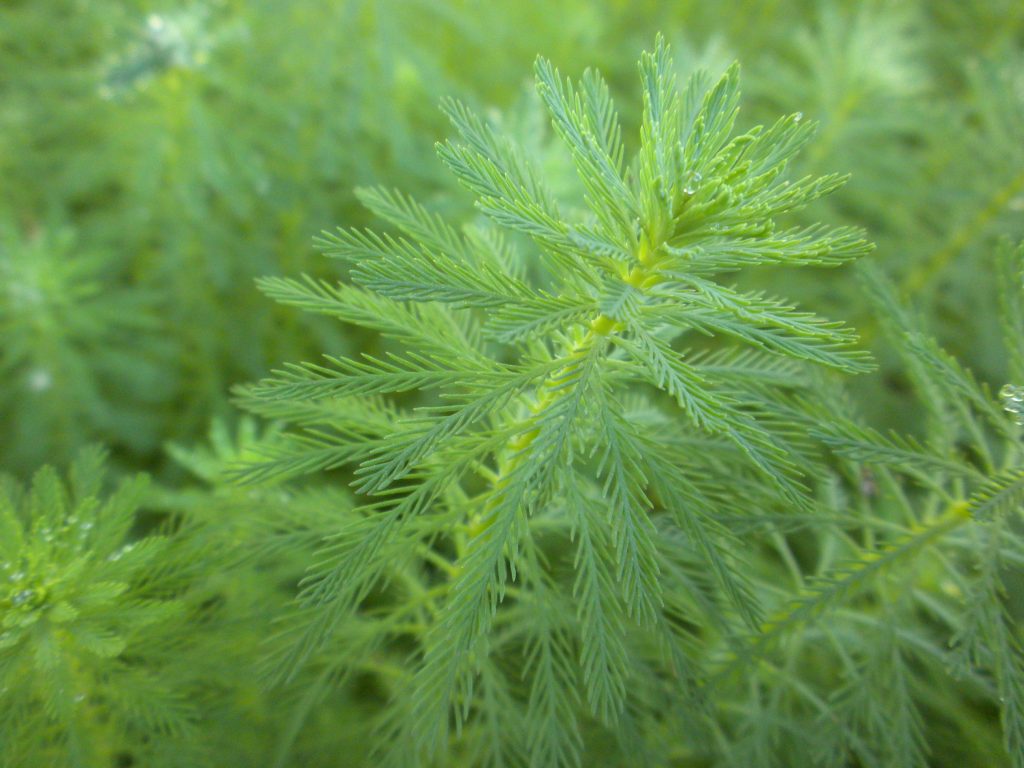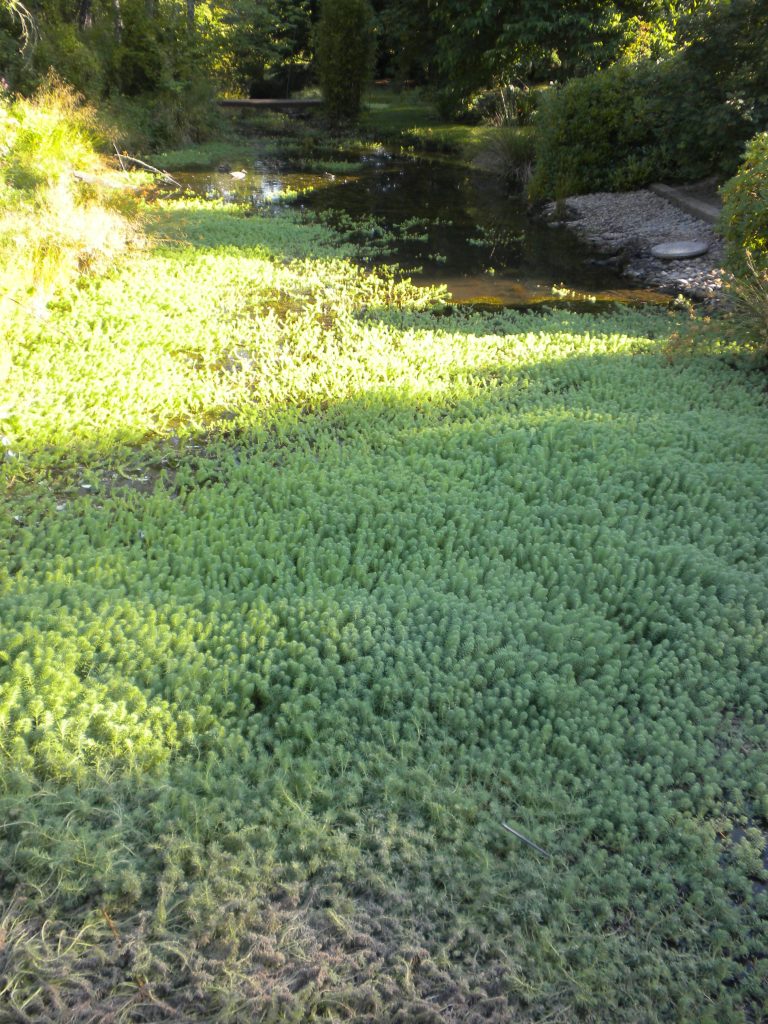Parrotfeather
Myriophyllum aquaticum
Plant Description
An aquatic floating plant that forms dense mats with stems up to 16 feet long. Between May and October spikes of feathery leaves, like bottle brushes or tiny pine trees, emerge up to one foot above the water.
Plant Details
| Life Forms | |
|---|---|
| Habitats | |
| Suggested Actions | |
| Mature Height | up to 16 feet long |
| Distribution | Found in waterways throughout western Oregon and Washington and in at least 24 other US states. |
| Control | While difficult to eradicate, parrotfeather can be pulled or raked, being careful to completely remove all fragments. Herbicide can only be applied by a licensed aquatic herbicide applicator. |
| Disposal Methods | Be sure to remove all fragments. |
| Reproduction and Spread | Spreads by fragmentation. |
| Introduced | Native to South America, Parrotfeather was introduced to the US around 1890 through the aquatic garden and aquarium trade. |
| Look Alikes | Other milfoils look similar underwater, but only parrotfeather has the distinct feathery, emergent bottle brush whorls. |
| Impact | Clogs waterways, ponds, and ditches. Eliminates native plants, aquatic habitat, and recreation. Reduces agricultural profitability. |
| More Info |
|
© Marion Soil and Water Conservation District. All Rights Reserved.

